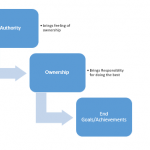Discuss the meaning of MRP terms such as planned order release and scheduled order receipt
Meaning of MRP terms
Discuss the meaning of MRP terms such as planned order release and scheduled order receipt.
Each and every item in a company needs its Material Requirement Planning or MRP record to be kept. It records item information like the planned order receipts, net requirements, scheduled receipts, gross requirements projected available balance.
A planned order release related to the release of planned replenishment orders by the material planner.
Scheduled order receipts on the other hand are planned receipt of replenishment orders which are recorded at the starting time.
Many practitioners currently update MRP weekly or biweekly. Would it be more valuable if it were updated daily? Discuss.
In my opinion MRP should be updated on weekly or biweekly basis. The reason is that the performance of operations may have natural variations on daily basis that can be averaged in weeks or more time periods to get an overall idea of the operation performance. If it is done on daily basis, the result may be an exception report and a normal variation could be termed as an abnormal one.
One unit of A is made of three units of B, one unit of C, and two units of D. B is composed of two units of E and one unit of D. C is made of one unit of B and two units of E. E is made of one unit of F.
Items B, C, E, and F have one-week lead times; A and D have lead times of two weeks. Assume that lot-for-lot (L4L) lot sizing is used for Items A, B, and F; lots of size 50, 50, and 200 are used for Items C, D, and E, respectively.
Items C, E, and F have onhand (beginning) inventories of 10, 50, and 150, respectively; all other items have zero beginning inventory. We are scheduled to receive 10 units of A in Week 2, 50 units of E in Week 1, and also 50 units of F in Week 1.
There are no other scheduled receipts. If 30 units of A are required in Week 8, use the low-level-coded bill-of-materials to find the necessary planned order releases for all components.
Bill of material record consist of the material required in the production of final product. While Master Production Schedule record the amount of quantity of each item and the time it would be required.
This table summarizes the information in the given situation:
| Item | Lead Time | On hand Inventory | Lot Sizing Rule | Schedule Receipts |
| A | 2 | 0 | L4L | 10-W2 |
| B | 1 | 0 | L4L | – |
| C | 1 | 10 | 50 | – |
| D | 2 | 0 | 50 | – |
| E | 1 | 50 | 200 | 50-W1 |
| F | 1 | 150 | L4L | 50-W1 |
For 30 units A in Week 8 the MRP schedule with low level coded bill of materials:
| Item A LT = 2 weeks | 1 | 2 | 3 | 4 | 5 | 6 | 7 | 8 |
| Gross Requirements | 30 | |||||||
| Scheduled Receipts | 10 | |||||||
| Projected Available balance | 10 | 10 | 10 | 10 | 10 | 10 | ||
| Net Requirements | 20 | |||||||
| Planned order receipt | 20 | |||||||
| Planned order release | 20 |
| Item A LT = 1 week | 1 | 2 | 3 | 4 | 5 | 6 | 7 | 8 |
| Gross Requirements | 20 | |||||||
| Scheduled Receipts | ||||||||
| Projected Available balance | 10 | 10 | 10 | 10 | 10 | 10 | ||
| Net Requirements | 10 | |||||||
| Planned order receipt | 50 | |||||||
| Planned order release | 50 |
| Item B LT = 1 week | 1 | 2 | 3 | 4 | 5 | 6 | 7 | 8 |
| Gross Requirements | 50 | 60 | ||||||
| Scheduled Receipts | ||||||||
| Projected Available balance | ||||||||
| Net Requirements | 50 | 60 | ||||||
| Planned order receipt | 50 | 60 | ||||||
| Planned order release | 50 | 60 |
| Item E LT = 1 week | 1 | 2 | 3 | 4 | 5 | 6 | 7 | 8 |
| Gross Requirements | 100 | 120 | ||||||
| Scheduled Receipts | 50 | |||||||
| Projected Available balance | 50 | 100 | 100 | 100 | 50 | |||
| Net Requirements | 70 | |||||||
| Planned order receipt | 200 | |||||||
| Planned order release | 200 |
| Item D LT = 1 week | 1 | 2 | 3 | 4 | 5 | 6 | 7 | 8 |
| Gross Requirements | 60 | 40 | ||||||
| Scheduled Receipts | ||||||||
| Projected Available balance | 0 | 50 | ||||||
| Net Requirements | 60 | 0 | ||||||
| Planned order receipt | 150 | 0 | ||||||
| Planned order release | 150 |
| Item F LT = 1 week | 1 | 2 | 3 | 4 | 5 | 6 | 7 | 8 |
| Gross Requirements | 200 | |||||||
| Scheduled Receipts | 50 | |||||||
| Projected Available balance | 150 | 200 | 200 | 200 | ||||
| Net Requirements | 0 | |||||||
| Planned order receipt | 0 | |||||||
| Planned order release | 200 |




